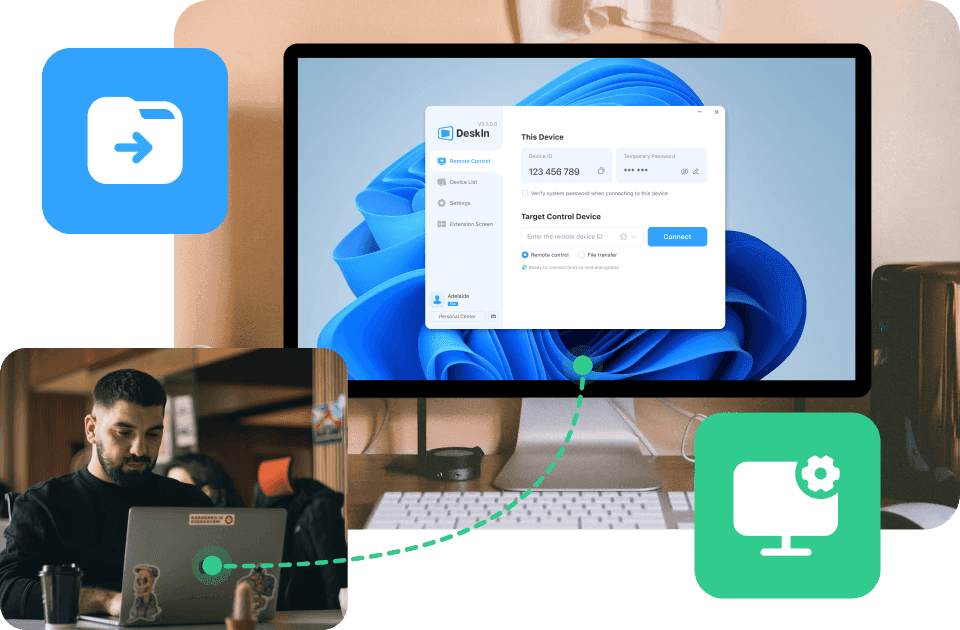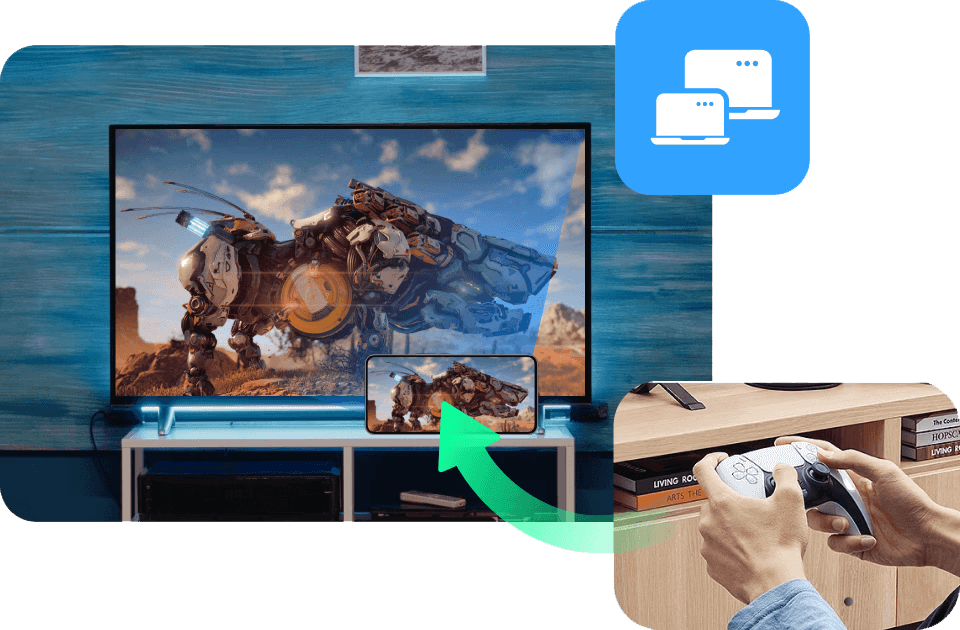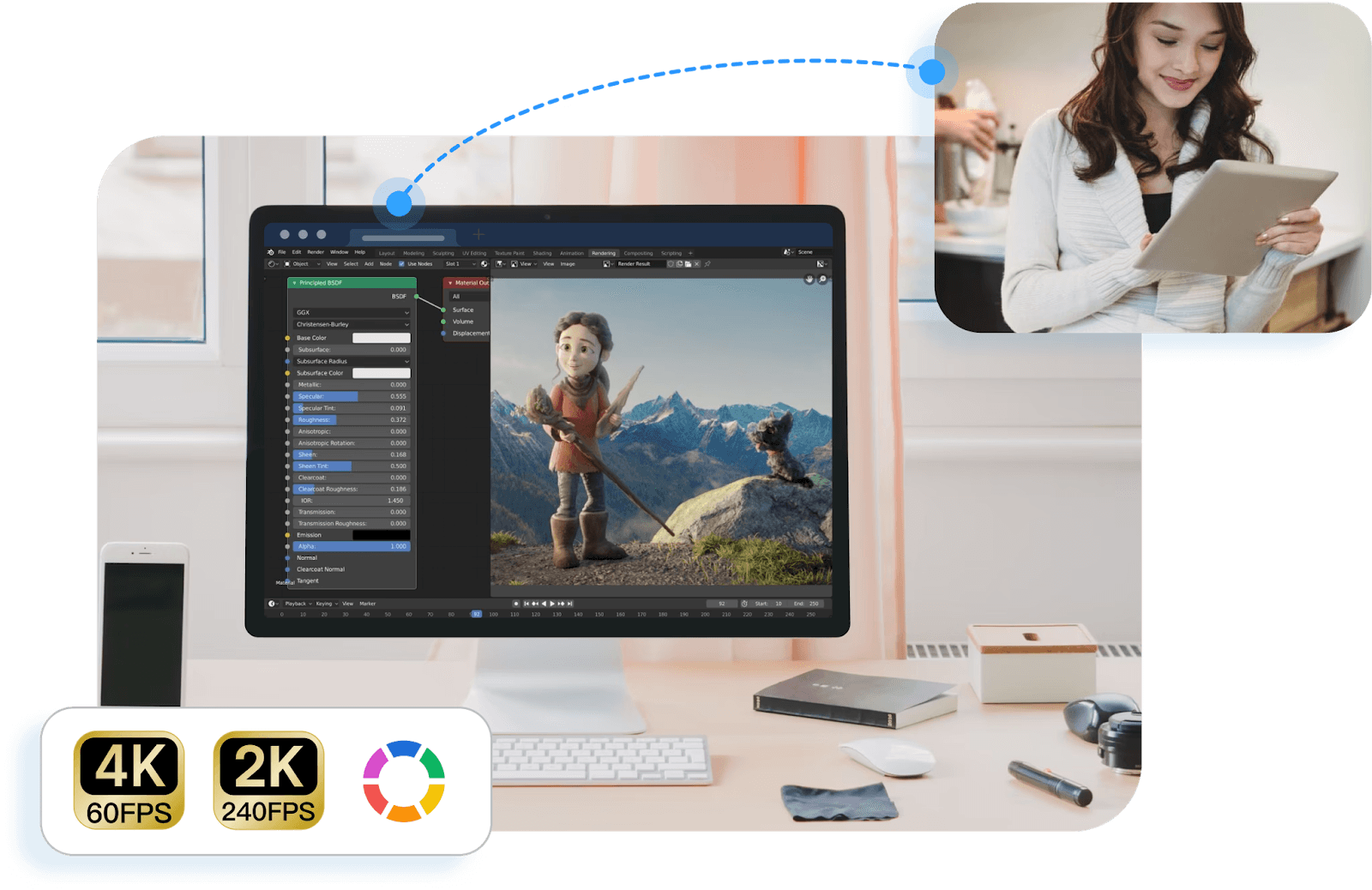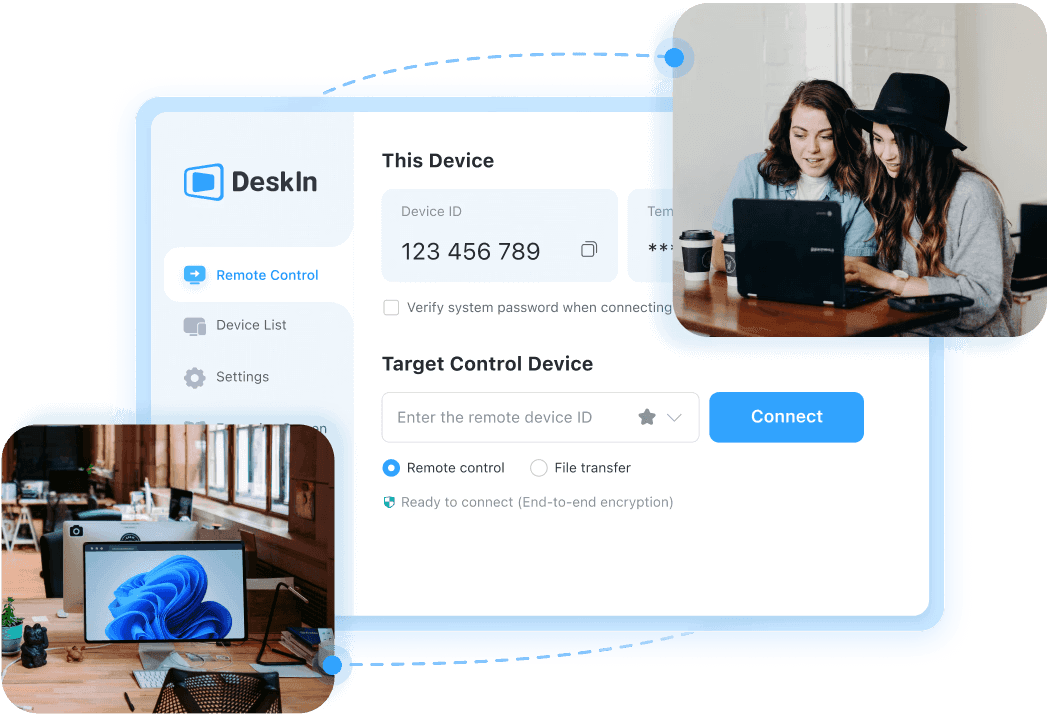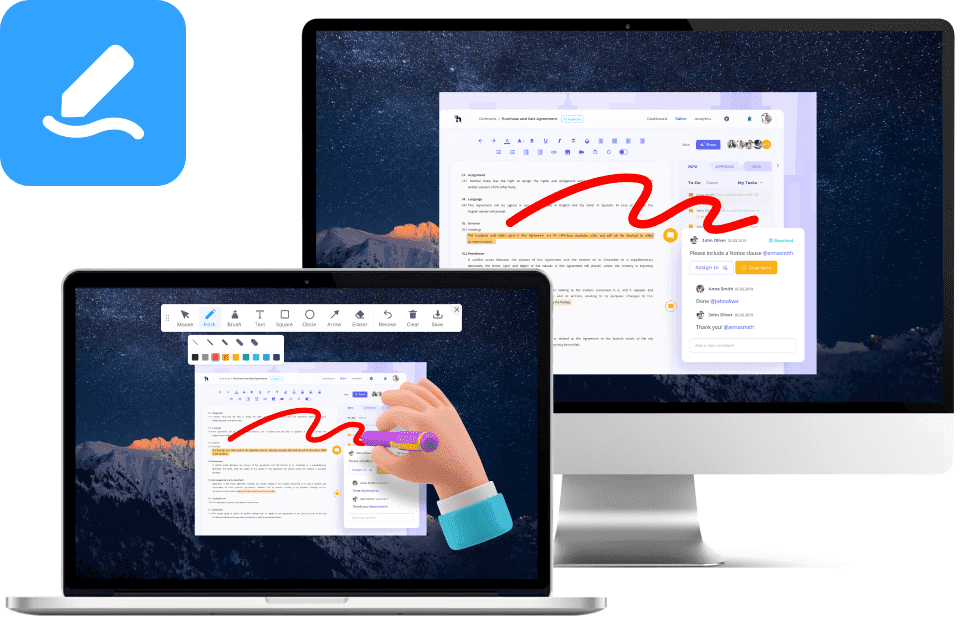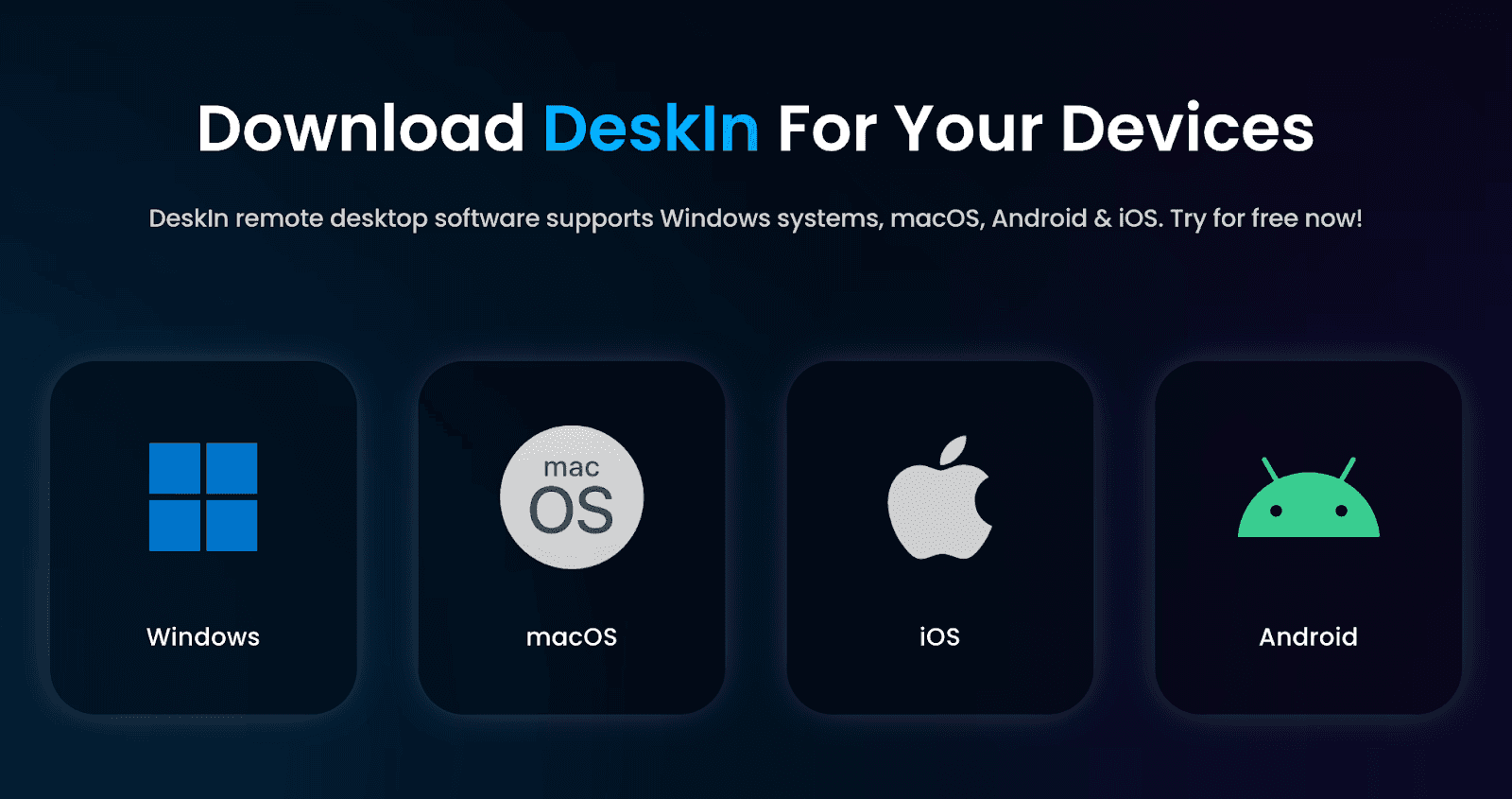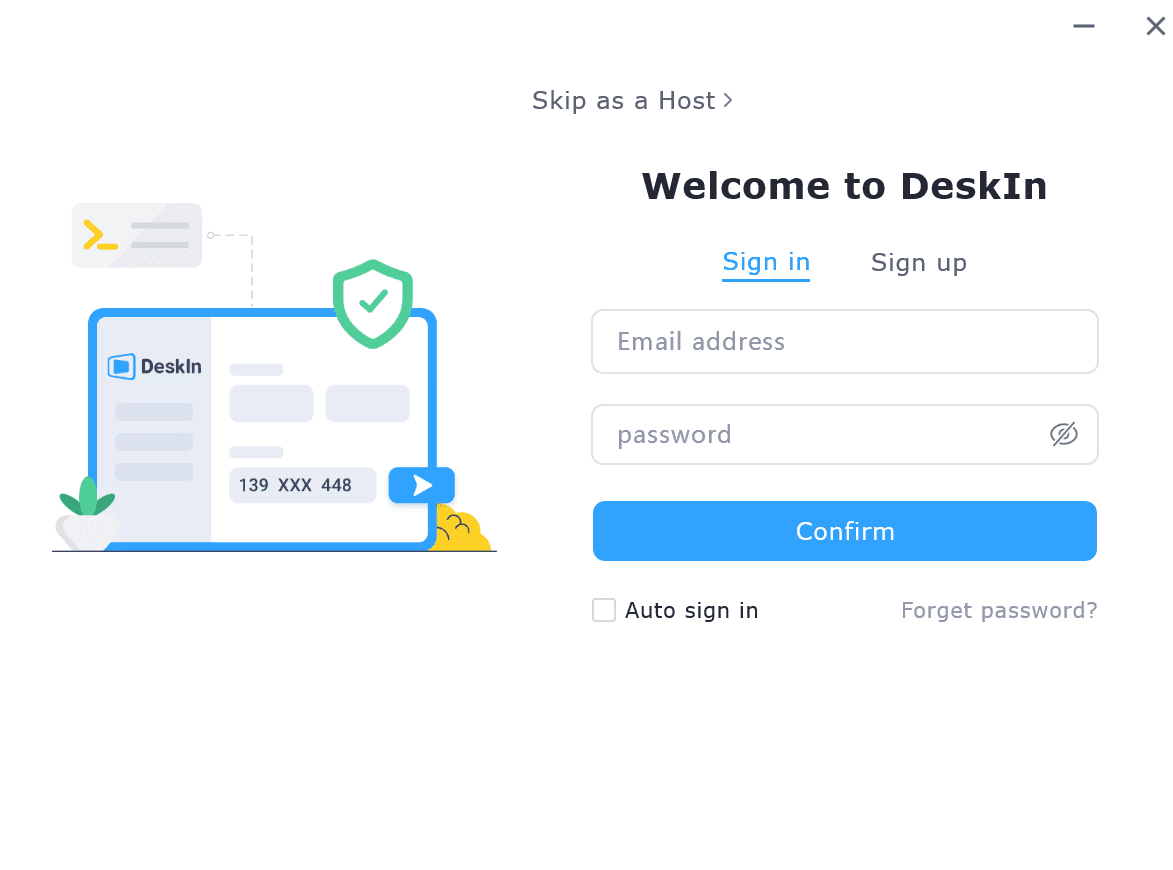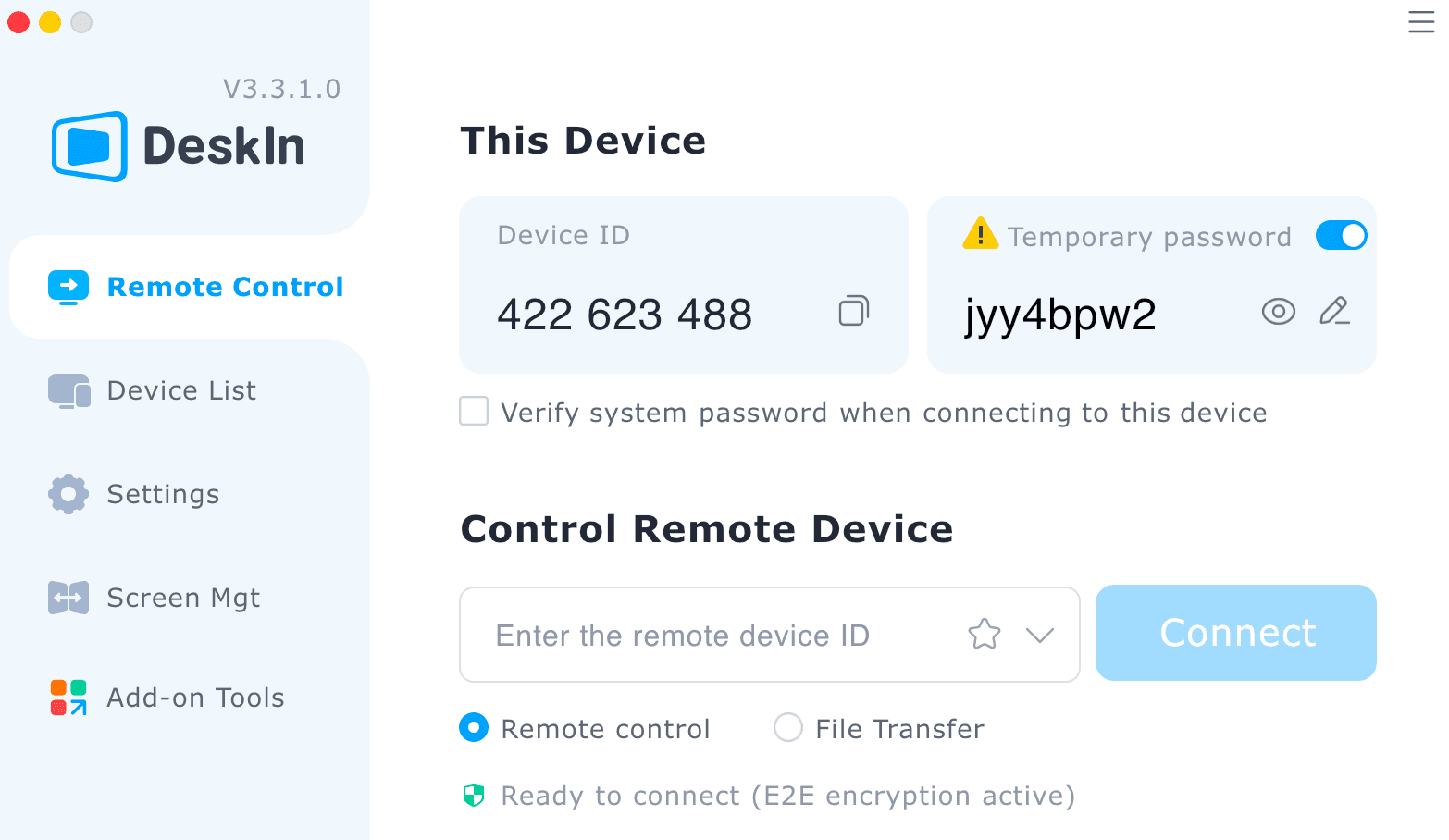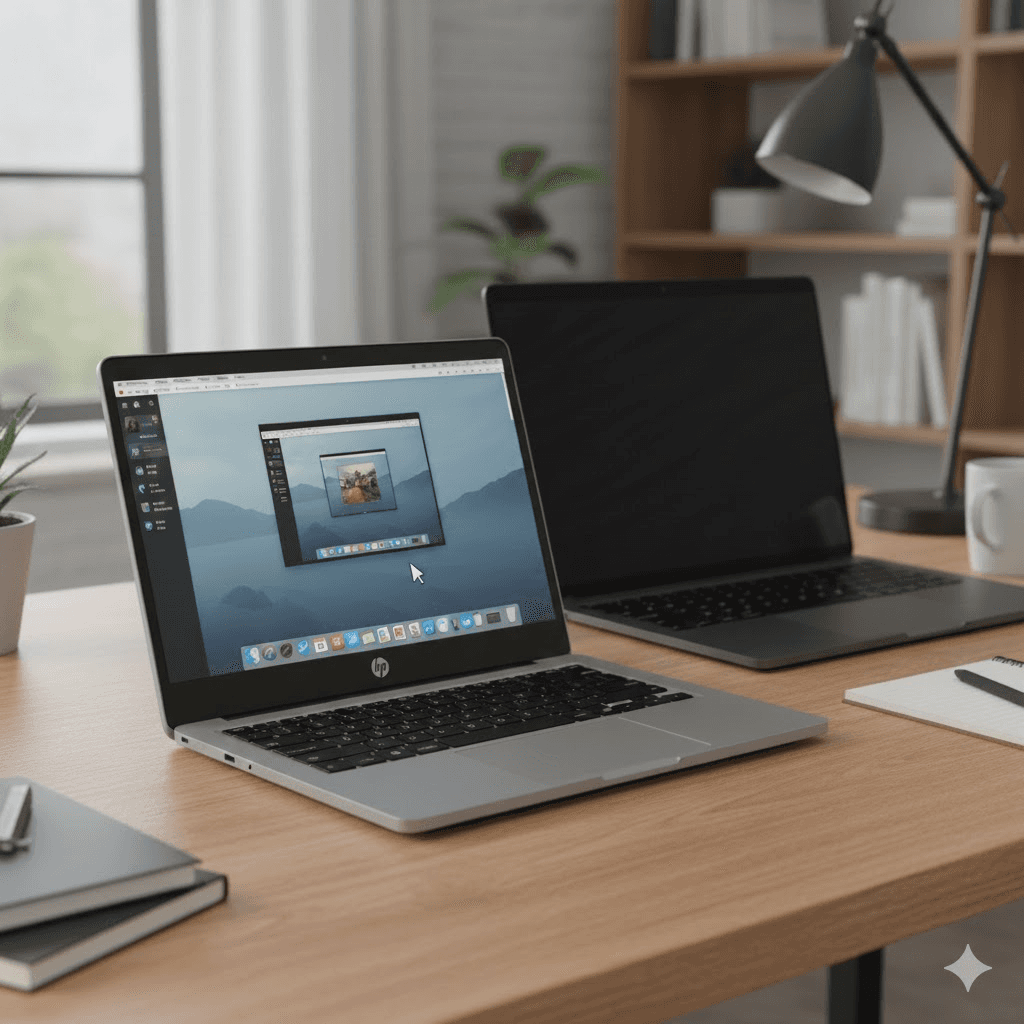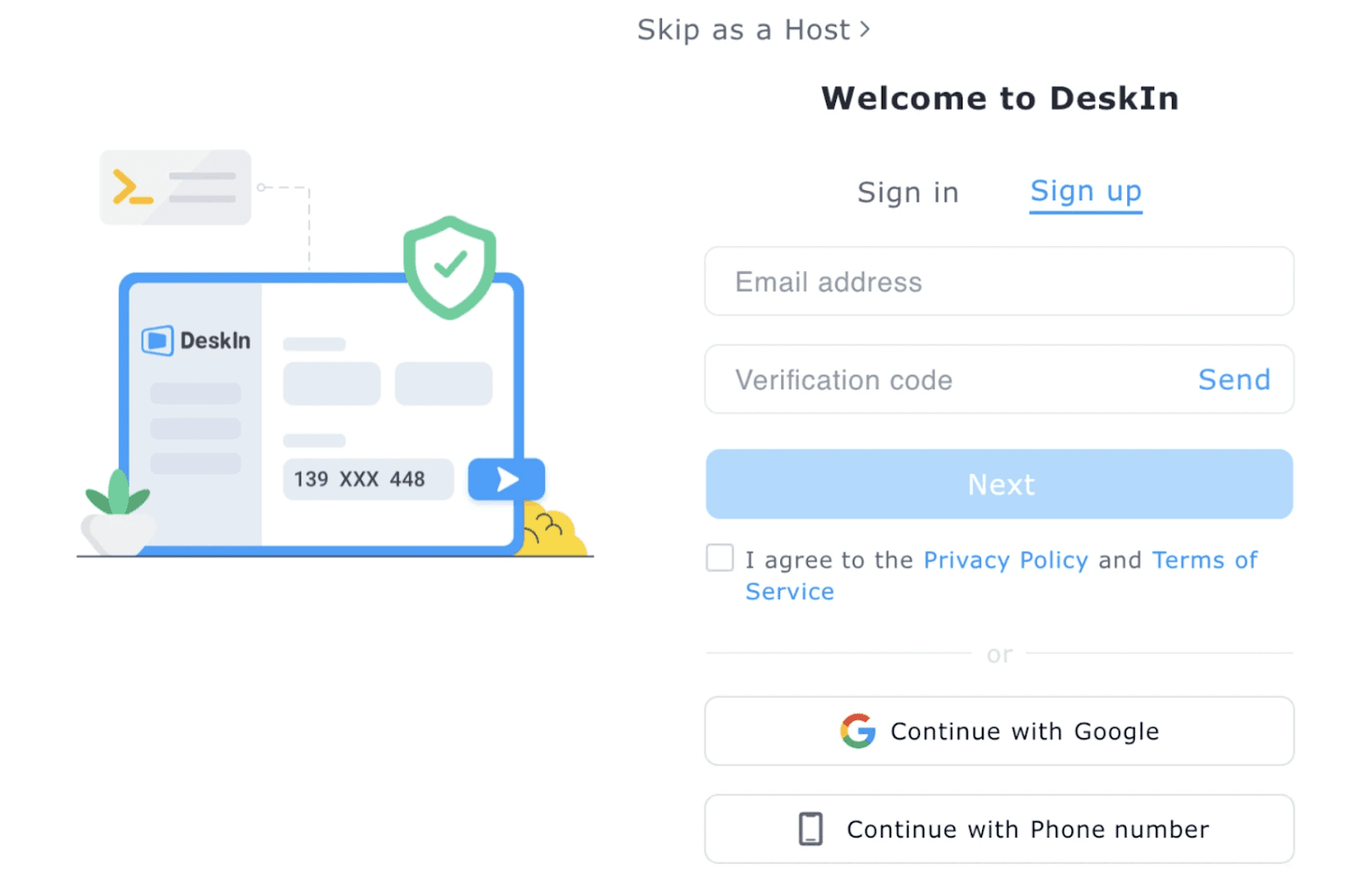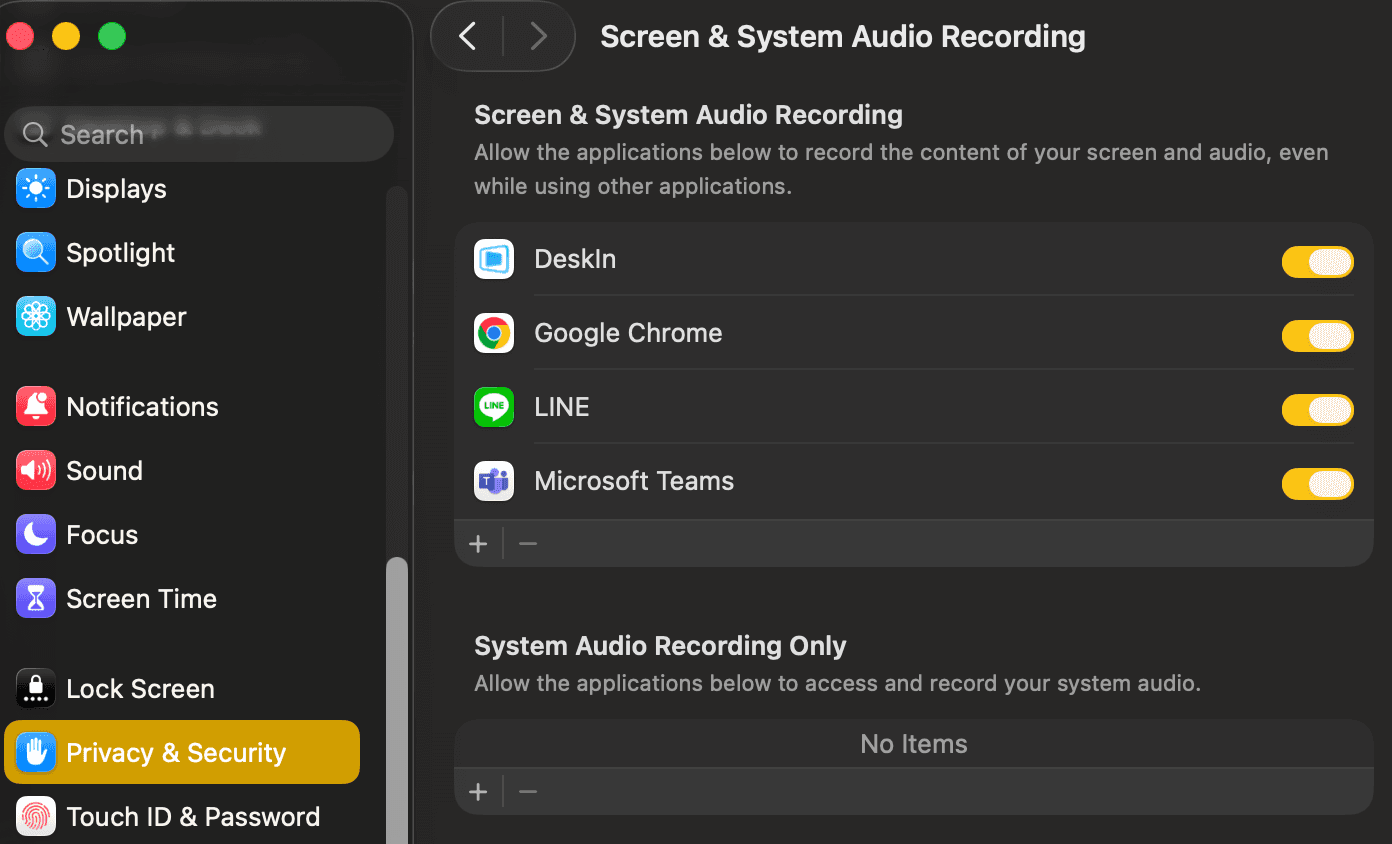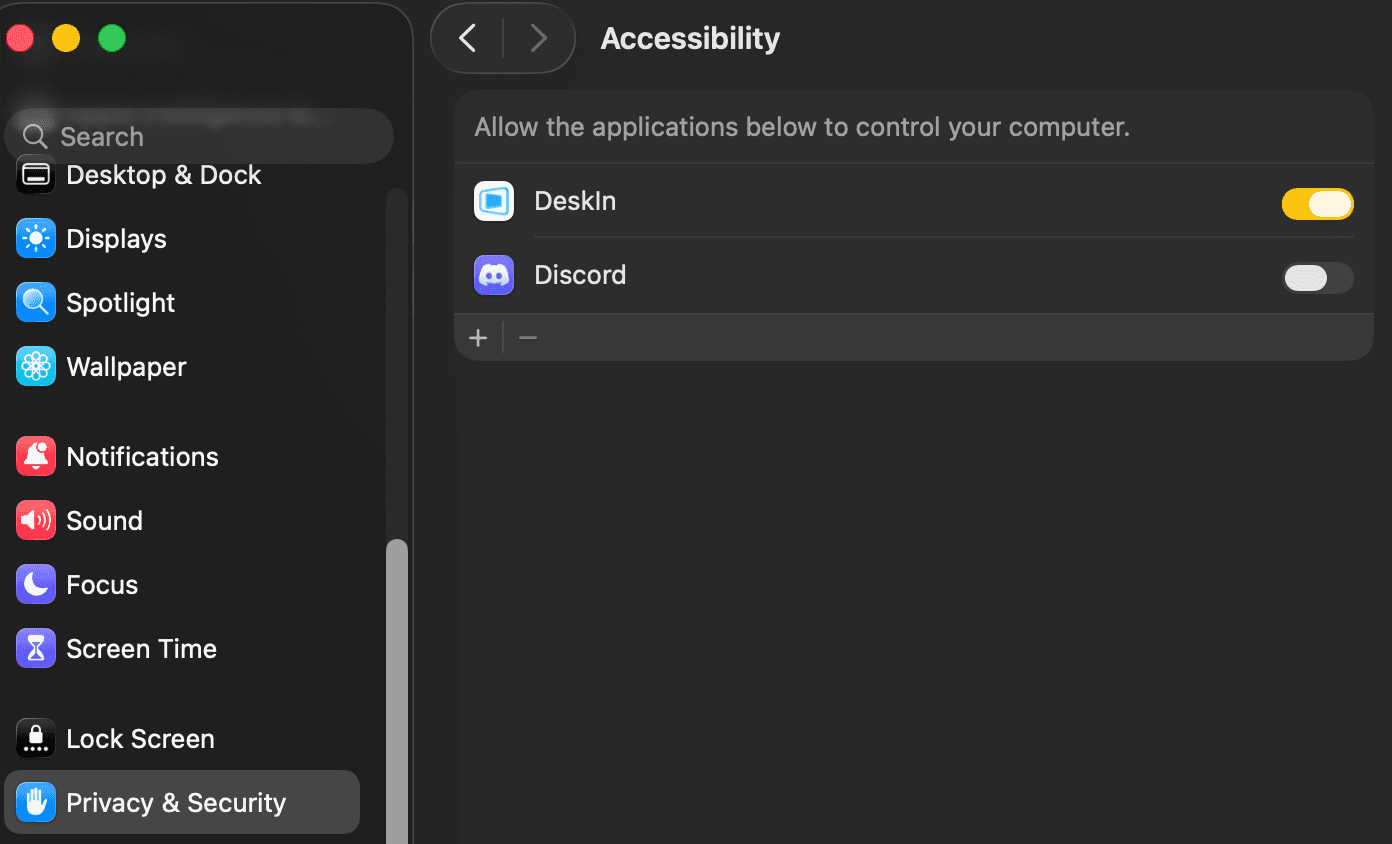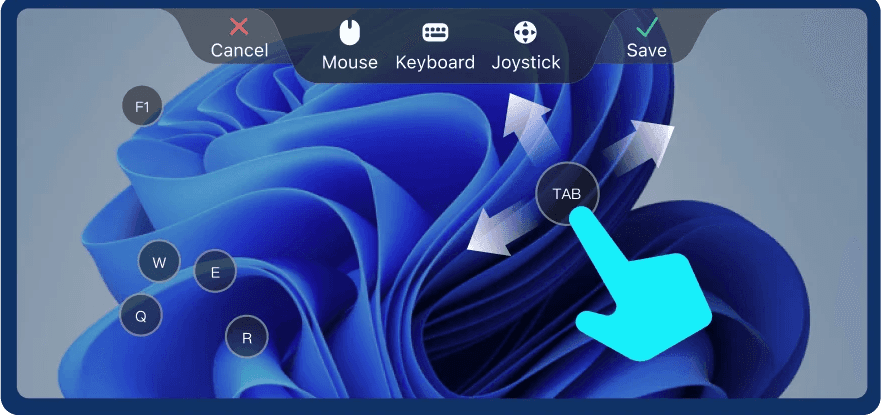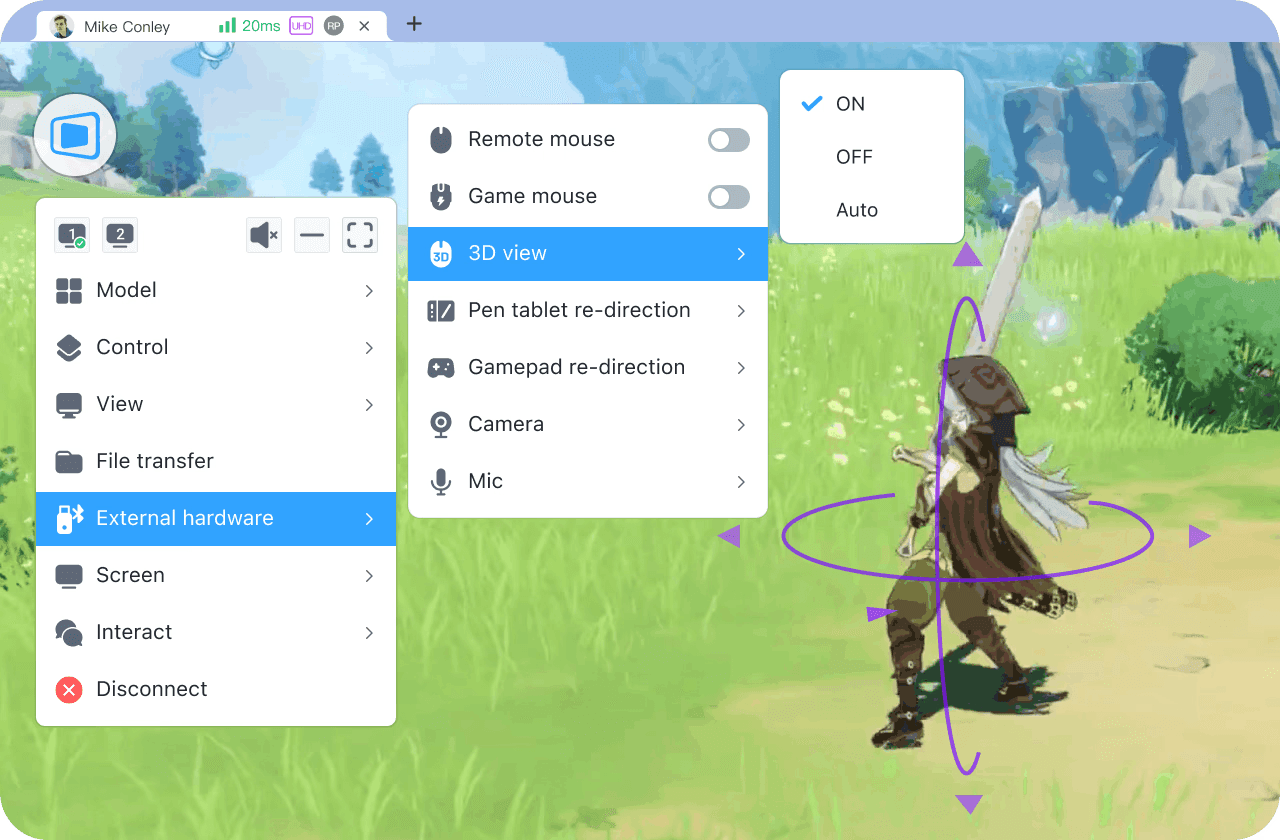Struggling to help friends or family with PC issues when you're on a Mac? Whether you're managing files, checking network settings, or adjusting system configurations, cross-platform remote access often means battling laggy connections and complex setups. That frustrating delay when moving windows or typing commands makes simple troubleshooting feel impossible. You need a truly smooth way to remote into PC from Mac without headaches.
In this guide, we'll explore 6 reliable tools tailored for seamless Mac-to-PC control, each with unique strengths. From free utilities to performance-optimized solutions, you'll discover options for casual helpdesk tasks, graphic-intensive work, and enterprise support. Keep reading to find your perfect match for effortless remote access Windows from device.
👀 More to Discover:
1. Use Smooth App DeskIn to Remotely Control PC from Mac
Remote desktop for Mac to Windows — DeskIn, is a cross-platform remote desktop client that allows you to control your Windows PC from a MacBook or iMac, anytime, anywhere. Whether you're working from home, traveling, or helping a friend, it delivers a smooth and secure connection with significantly lower setup requirements than traditional remote tools. With its intuitive interface and advanced feature set, it is the best remote software for accessing files or software, transferring files, PC gaming from a Mac, etc.
👀 Key Features of DeskIn for Mac-to-Windows Access:
Cross-platform compatibility – Connects your Mac to any Windows device.
Unattended access & privacy screen – Ensures safe access to your Windows PC without user interaction.
Low-latency remote sessions – Offers optimized features for smooth input and visual feedback.
Remote file transfer – Transfer files between Mac and PC with no size/type restrictions.
4K and high-FPS streaming – Up to 4K/60FPS or 2K/144FPS for fluid visuals.
Screen mirroring & virtual screens – Mirror Windows to Mac or extend the display.
Now, let's check out the operation steps on using DeskIn to remote PC access from your Mac!
Step 1. Download and install DeskIn for both your Mac and your Windows PC. Create a free DeskIn account using your email and complete the verification process. Log in to the same account on both your Mac and the target Windows PC.

Step 2. On your Mac, launch DeskIn, enter the device ID and password that is shown on the DeskIn interface on your PC, and click the "Connect" button to start the session. You'll instantly be able to interact with your Windows desktop in real time.

Step 3. While connected, explore DeskIn's features such as transfering files, screen sharing, gamepad support, and multi-monitor controls directly from the interface. You can also toggle options like privacy mode or switch between control and view-only mode as needed.
With DeskIn, there's no need for VPN setup, IP configuration, or concern over Windows editions, making it a highly accessible tool for everyday users and professionals alike.

2. Try Microsoft Remote Desktop (Free for Some Users)
The most official way to remote access a PC from a Mac is by using Microsoft Remote Desktop, now called Windows App on macOS. This free and built-in tool from Microsoft allows secure remote access from your MacBook or iMac to a Windows PC on the same network via VPN or internet routing.
The Windows App supports full mouse and keyboard control, Retina display optimization, multiple monitors, audio and video redirection, and clipboard sharing. It also allows basic file redirection and access to enterprise environments such as Remote Desktop Services, Windows 365, and Azure Virtual Desktop, making it a great option for professionals and IT support teams.
Limitations While Using the Windows App:
Requires Windows Pro, Enterprise, or Education editions. It will not work with Windows Home.
Network setup (e.g., VPN or port forwarding) may be required for off-site connections.
Lacks advanced features like drag-and-drop file transfer or remote wake.
Performance may vary with unstable networks, especially if the Mac enters sleep mode.
You may experience session interruptions in corporate environments due to strict IT policies.
If the above features suit your needs, and the limits do not bother you, follow the steps below to get started. For detailed step-by-step guidance, check out the full guide on using Microsoft Remote Desktop on Mac.
STEP 1: Download Microsoft Remote Desktop (now called Windows App) from the Mac App Store and open the app.
STEP 2: On your Windows PC, go to "Settings > System > Remote Desktop" and enable remote access.Find your PC name in "Settings > System > About", or use "ipconfig" in Command Prompt to get the IP address.
STEP 3: In the Remote Desktop app on your Mac, click "+ Add PC", and enter the PC name or IP, then sign in with your Windows credentials.
STEP 4: Adjust display and audio settings as needed, then click "Connect" to start your session.
If you're looking for a faster setup or more fluid performance — especially outside your home network — you might find the first method, DeskIn, more efficient.

[Fixes]: Microsoft Remote Desktop Not Working on My Computer
If you can't access PC remotely using Microsoft Remote Desktop, common culprits include disabled remote settings on the target PC, firewall blocks, or network glitches. Service failures and incorrect permissions also frequently break connections. We'll outline key fixes to regain seamless control PC remotely.
9 Causes & Single-Sentence Solutions:
Remote Access Disabled: Enable "Remote Desktop" in Windows System Settings.
Firewall Blocking: Allow Remote Desktop through Windows Firewall (Port 3389).
Network Failures: Verify connectivity via ping and update network drivers.
Service Stopped: Restart "Remote Desktop Services" in services.msc.
DNS Issues: Flush DNS cache (
ipconfig /flushdns) or assign a static IP.Group Policy Restrictions: Configure Group Policy Editor (
gpedit.msc) to permit Remote Desktop.NLA Conflicts: Temporarily disable Network Level Authentication in target PC settings.
Update Conflicts: Roll back recent Windows updates causing instability.
Permission Errors: Add your user account to "Remote Desktop Users" on the target PC.
You May Also Like: Microsoft Remote Desktop Shutting Down.
3. Use Chrome Remote Desktop to Access PC
Integrated directly into Chrome, Chrome Remote Desktop eliminates standalone software installations, leveraging your existing browser for instant cross-platform access. It's ideal for daily Chrome users who need lightweight, on-demand solutions to control another computer remotely Mac or Windows devices. Setup takes under 2 minutes, requiring only a Google Account and the Chrome browser.
Steps to Access a PC via Chrome Remote Desktop:
Pre-requisites:
Chrome browser installed on both computers
Signed into the same Google Account on both devices
STEP 1: Enable Remote Access on Target PC
Open Chrome, navigate to
remotedesktop.google.com/access > Click Download > Install the host component > Name your PC and set a secure PIN.

STEP 2: Grant Security Permissions (Mac-specific)
If setting up a Mac host, enter your system password when prompted to authorize accessibility permissions. Adjust Security & Privacy settings if required.
STEP 3: Initiate Connection from Mac
On your Mac, visit remotedesktop.google.com/access → Select the target PC under Remote Devices → Enter the PIN.

STEP 4: Remote Control Session
Use the on-screen toolbar to send Ctrl+Alt+Del, adjust resolution, or toggle full-screen mode. The remote PC's desktop appears directly in your Chrome tab.
STEP 5: End Session
Close the Chrome tab or click Disconnect in the session toolbar. To revoke access, remove the PC from your device list at remotedesktop.google.com/access.
3 More Tools to Remote into PC from Mac
Beyond these core methods, we'll explore three powerful tools to control a PC from your Mac: Supremo, Parsec, and AnyDesk. Each excels in unique scenarios—from effortless screen sharing to graphics-heavy workflows and scalable enterprise control. Continue reading to discover which tool aligns best with your remote access needs.
Supremo - Easy to Use

Supremo delivers hassle-free remote access without router configurations, making it ideal to remote into PC from Mac on different networks. Its online address book centralizes contacts and chat, while the free tier and affordable paid plans (from €5/month) suit casual users. However, expect limitations: no clipboard sync (even in chat), noticeable lag, session drops if screens sleep, and interface glitches during screen rotation.
Parsec - High-Performance

Engineered for graphics-intensive workflows, Parsec delivers buttery-smooth 60FPS ultra-HD streaming—perfect for IT, creative design, or gaming when you use remote login to someone elses Mac or PC. All connections leverage peer-to-peer encryption, ensuring zero third-party data exposure. Just install, pair devices, and dominate resource-heavy tasks with desktop-native responsiveness.
AnyDesk - Scalable Control Power

When you need to remote from Mac into PC, AnyDesk delivers robust features like seamless file transfer, remote printing, unattended access, screen sharing, and collaborative whiteboarding. Its lightweight design (2MB) enables quick setup with no registration required. However, the free version restricts device management to 3 devices, triggers commercial-use pop-ups for frequent sessions, and may block connections if business activity is suspected
Quick Comparison: Choose Best Tool to Remote into PC from MacOS
After exploring these tools, if you don't know how to compare how DeskIn and Microsoft Remote Desktop (Windows App) perform, and other software across key areas, we summarized here for you.
Here's a side-by-side comparison to help you choose the best solution based on your needs:
DeskIn: Delivers sub-40ms latency for fluid control and military-grade 256-bit encryption to protect your privacy during remote sessions.
Microsoft Remote Desktop: Offers free built-in Windows integration (excluding Home Edition), custom display resolution tuning, and multi-monitor support for flexible workflows.
Chrome Remote Desktop: Requires zero installations and operates entirely within Chrome, making cross-platform access simple for everyday users.
Supremo: Simplifies team management with its integrated online address book (contacts/chat) and connection reporting for billing/auditing accuracy.
Parsec: Streams ultra-HD video at 60FPS with zero lag, transforming your Mac into a powerhouse for PC gaming or graphics-intensive tasks.
AnyDesk: Scales seamlessly across diverse Mac/Windows devices with enterprise features like file transfer and remote printing for team collaboration.
If you need a straightforward tool for light office tasks, Microsoft Remote Desktop gets the job done. But for power users, gamers, or remote teams looking for flexibility and performance, DeskIn is a more modern and full-featured solution.

FAQs About How to Remote Access Windows from Mac
Q1: Do I need to be on the same network to remote access a PC from a Mac?
With the Windows App, you typically need to be on the same local network or use a VPN to simulate that environment; otherwise, the connection may fail or require port forwarding, which is not beginner-friendly.
DeskIn, on the other hand, uses cloud-based relay servers to enable cross-network connections by default. This makes it more convenient for users working remotely across different locations or networks.
Q2: Can I transfer files from my Mac to my PC during a remote session?
The Windows App supports basic file redirection, but only from pre-specified folders and with limited file handling capability. It's suitable for light file access, not dynamic transfer.
DeskIn provides a dedicated file transfer interface, allowing real-time drag-and-drop transfers with speeds up to 12MB/s, regardless of file format. It also supports clipboard sync and folder sharing for more advanced workflows.
Q3: Can I use these apps to play PC games from my Mac?
The Windows App is not designed for high-performance tasks like gaming. Input latency, limited FPS, and lack of game controller support make it impractical for interactive content.
DeskIn, however, offers 60FPS streaming, low-latency input, support for gamepad passthrough, and customizable keyboard/mouse mappings. While not a full game streaming platform, it’s suitable for casual or moderately demanding remote gaming experiences.
Conclusion
Your ideal solution to remote into PC from Mac depends entirely on priorities: choose Chrome RD for zero-install simplicity, or Parsec for lag-free gaming. Supremo suits contact-heavy teams, AnyDesk scales for collaboration, while Microsoft RD leverages native Windows integration. We recommend testing 1-2 options matching your core workflow.
However, if you need a more versatile, feature-rich, and user-friendly remote desktop experience, DeskIn stands out. It removes technical barriers, supports a wide range of use cases, from work to entertainment, and includes powerful tools like file transfer, screen mirroring, and 4K streaming, even in its free version.

Struggling to help friends or family with PC issues when you're on a Mac? Whether you're managing files, checking network settings, or adjusting system configurations, cross-platform remote access often means battling laggy connections and complex setups. That frustrating delay when moving windows or typing commands makes simple troubleshooting feel impossible. You need a truly smooth way to remote into PC from Mac without headaches.
In this guide, we'll explore 6 reliable tools tailored for seamless Mac-to-PC control, each with unique strengths. From free utilities to performance-optimized solutions, you'll discover options for casual helpdesk tasks, graphic-intensive work, and enterprise support. Keep reading to find your perfect match for effortless remote access Windows from device.
👀 More to Discover:
1. Use Smooth App DeskIn to Remotely Control PC from Mac
Remote desktop for Mac to Windows — DeskIn, is a cross-platform remote desktop client that allows you to control your Windows PC from a MacBook or iMac, anytime, anywhere. Whether you're working from home, traveling, or helping a friend, it delivers a smooth and secure connection with significantly lower setup requirements than traditional remote tools. With its intuitive interface and advanced feature set, it is the best remote software for accessing files or software, transferring files, PC gaming from a Mac, etc.
👀 Key Features of DeskIn for Mac-to-Windows Access:
Cross-platform compatibility – Connects your Mac to any Windows device.
Unattended access & privacy screen – Ensures safe access to your Windows PC without user interaction.
Low-latency remote sessions – Offers optimized features for smooth input and visual feedback.
Remote file transfer – Transfer files between Mac and PC with no size/type restrictions.
4K and high-FPS streaming – Up to 4K/60FPS or 2K/144FPS for fluid visuals.
Screen mirroring & virtual screens – Mirror Windows to Mac or extend the display.
Now, let's check out the operation steps on using DeskIn to remote PC access from your Mac!
Step 1. Download and install DeskIn for both your Mac and your Windows PC. Create a free DeskIn account using your email and complete the verification process. Log in to the same account on both your Mac and the target Windows PC.

Step 2. On your Mac, launch DeskIn, enter the device ID and password that is shown on the DeskIn interface on your PC, and click the "Connect" button to start the session. You'll instantly be able to interact with your Windows desktop in real time.

Step 3. While connected, explore DeskIn's features such as transfering files, screen sharing, gamepad support, and multi-monitor controls directly from the interface. You can also toggle options like privacy mode or switch between control and view-only mode as needed.
With DeskIn, there's no need for VPN setup, IP configuration, or concern over Windows editions, making it a highly accessible tool for everyday users and professionals alike.

2. Try Microsoft Remote Desktop (Free for Some Users)
The most official way to remote access a PC from a Mac is by using Microsoft Remote Desktop, now called Windows App on macOS. This free and built-in tool from Microsoft allows secure remote access from your MacBook or iMac to a Windows PC on the same network via VPN or internet routing.
The Windows App supports full mouse and keyboard control, Retina display optimization, multiple monitors, audio and video redirection, and clipboard sharing. It also allows basic file redirection and access to enterprise environments such as Remote Desktop Services, Windows 365, and Azure Virtual Desktop, making it a great option for professionals and IT support teams.
Limitations While Using the Windows App:
Requires Windows Pro, Enterprise, or Education editions. It will not work with Windows Home.
Network setup (e.g., VPN or port forwarding) may be required for off-site connections.
Lacks advanced features like drag-and-drop file transfer or remote wake.
Performance may vary with unstable networks, especially if the Mac enters sleep mode.
You may experience session interruptions in corporate environments due to strict IT policies.
If the above features suit your needs, and the limits do not bother you, follow the steps below to get started. For detailed step-by-step guidance, check out the full guide on using Microsoft Remote Desktop on Mac.
STEP 1: Download Microsoft Remote Desktop (now called Windows App) from the Mac App Store and open the app.
STEP 2: On your Windows PC, go to "Settings > System > Remote Desktop" and enable remote access.Find your PC name in "Settings > System > About", or use "ipconfig" in Command Prompt to get the IP address.
STEP 3: In the Remote Desktop app on your Mac, click "+ Add PC", and enter the PC name or IP, then sign in with your Windows credentials.
STEP 4: Adjust display and audio settings as needed, then click "Connect" to start your session.
If you're looking for a faster setup or more fluid performance — especially outside your home network — you might find the first method, DeskIn, more efficient.

[Fixes]: Microsoft Remote Desktop Not Working on My Computer
If you can't access PC remotely using Microsoft Remote Desktop, common culprits include disabled remote settings on the target PC, firewall blocks, or network glitches. Service failures and incorrect permissions also frequently break connections. We'll outline key fixes to regain seamless control PC remotely.
9 Causes & Single-Sentence Solutions:
Remote Access Disabled: Enable "Remote Desktop" in Windows System Settings.
Firewall Blocking: Allow Remote Desktop through Windows Firewall (Port 3389).
Network Failures: Verify connectivity via ping and update network drivers.
Service Stopped: Restart "Remote Desktop Services" in services.msc.
DNS Issues: Flush DNS cache (
ipconfig /flushdns) or assign a static IP.Group Policy Restrictions: Configure Group Policy Editor (
gpedit.msc) to permit Remote Desktop.NLA Conflicts: Temporarily disable Network Level Authentication in target PC settings.
Update Conflicts: Roll back recent Windows updates causing instability.
Permission Errors: Add your user account to "Remote Desktop Users" on the target PC.
You May Also Like: Microsoft Remote Desktop Shutting Down.
3. Use Chrome Remote Desktop to Access PC
Integrated directly into Chrome, Chrome Remote Desktop eliminates standalone software installations, leveraging your existing browser for instant cross-platform access. It's ideal for daily Chrome users who need lightweight, on-demand solutions to control another computer remotely Mac or Windows devices. Setup takes under 2 minutes, requiring only a Google Account and the Chrome browser.
Steps to Access a PC via Chrome Remote Desktop:
Pre-requisites:
Chrome browser installed on both computers
Signed into the same Google Account on both devices
STEP 1: Enable Remote Access on Target PC
Open Chrome, navigate to
remotedesktop.google.com/access > Click Download > Install the host component > Name your PC and set a secure PIN.

STEP 2: Grant Security Permissions (Mac-specific)
If setting up a Mac host, enter your system password when prompted to authorize accessibility permissions. Adjust Security & Privacy settings if required.
STEP 3: Initiate Connection from Mac
On your Mac, visit remotedesktop.google.com/access → Select the target PC under Remote Devices → Enter the PIN.

STEP 4: Remote Control Session
Use the on-screen toolbar to send Ctrl+Alt+Del, adjust resolution, or toggle full-screen mode. The remote PC's desktop appears directly in your Chrome tab.
STEP 5: End Session
Close the Chrome tab or click Disconnect in the session toolbar. To revoke access, remove the PC from your device list at remotedesktop.google.com/access.
3 More Tools to Remote into PC from Mac
Beyond these core methods, we'll explore three powerful tools to control a PC from your Mac: Supremo, Parsec, and AnyDesk. Each excels in unique scenarios—from effortless screen sharing to graphics-heavy workflows and scalable enterprise control. Continue reading to discover which tool aligns best with your remote access needs.
Supremo - Easy to Use

Supremo delivers hassle-free remote access without router configurations, making it ideal to remote into PC from Mac on different networks. Its online address book centralizes contacts and chat, while the free tier and affordable paid plans (from €5/month) suit casual users. However, expect limitations: no clipboard sync (even in chat), noticeable lag, session drops if screens sleep, and interface glitches during screen rotation.
Parsec - High-Performance

Engineered for graphics-intensive workflows, Parsec delivers buttery-smooth 60FPS ultra-HD streaming—perfect for IT, creative design, or gaming when you use remote login to someone elses Mac or PC. All connections leverage peer-to-peer encryption, ensuring zero third-party data exposure. Just install, pair devices, and dominate resource-heavy tasks with desktop-native responsiveness.
AnyDesk - Scalable Control Power

When you need to remote from Mac into PC, AnyDesk delivers robust features like seamless file transfer, remote printing, unattended access, screen sharing, and collaborative whiteboarding. Its lightweight design (2MB) enables quick setup with no registration required. However, the free version restricts device management to 3 devices, triggers commercial-use pop-ups for frequent sessions, and may block connections if business activity is suspected
Quick Comparison: Choose Best Tool to Remote into PC from MacOS
After exploring these tools, if you don't know how to compare how DeskIn and Microsoft Remote Desktop (Windows App) perform, and other software across key areas, we summarized here for you.
Here's a side-by-side comparison to help you choose the best solution based on your needs:
DeskIn: Delivers sub-40ms latency for fluid control and military-grade 256-bit encryption to protect your privacy during remote sessions.
Microsoft Remote Desktop: Offers free built-in Windows integration (excluding Home Edition), custom display resolution tuning, and multi-monitor support for flexible workflows.
Chrome Remote Desktop: Requires zero installations and operates entirely within Chrome, making cross-platform access simple for everyday users.
Supremo: Simplifies team management with its integrated online address book (contacts/chat) and connection reporting for billing/auditing accuracy.
Parsec: Streams ultra-HD video at 60FPS with zero lag, transforming your Mac into a powerhouse for PC gaming or graphics-intensive tasks.
AnyDesk: Scales seamlessly across diverse Mac/Windows devices with enterprise features like file transfer and remote printing for team collaboration.
If you need a straightforward tool for light office tasks, Microsoft Remote Desktop gets the job done. But for power users, gamers, or remote teams looking for flexibility and performance, DeskIn is a more modern and full-featured solution.

FAQs About How to Remote Access Windows from Mac
Q1: Do I need to be on the same network to remote access a PC from a Mac?
With the Windows App, you typically need to be on the same local network or use a VPN to simulate that environment; otherwise, the connection may fail or require port forwarding, which is not beginner-friendly.
DeskIn, on the other hand, uses cloud-based relay servers to enable cross-network connections by default. This makes it more convenient for users working remotely across different locations or networks.
Q2: Can I transfer files from my Mac to my PC during a remote session?
The Windows App supports basic file redirection, but only from pre-specified folders and with limited file handling capability. It's suitable for light file access, not dynamic transfer.
DeskIn provides a dedicated file transfer interface, allowing real-time drag-and-drop transfers with speeds up to 12MB/s, regardless of file format. It also supports clipboard sync and folder sharing for more advanced workflows.
Q3: Can I use these apps to play PC games from my Mac?
The Windows App is not designed for high-performance tasks like gaming. Input latency, limited FPS, and lack of game controller support make it impractical for interactive content.
DeskIn, however, offers 60FPS streaming, low-latency input, support for gamepad passthrough, and customizable keyboard/mouse mappings. While not a full game streaming platform, it’s suitable for casual or moderately demanding remote gaming experiences.
Conclusion
Your ideal solution to remote into PC from Mac depends entirely on priorities: choose Chrome RD for zero-install simplicity, or Parsec for lag-free gaming. Supremo suits contact-heavy teams, AnyDesk scales for collaboration, while Microsoft RD leverages native Windows integration. We recommend testing 1-2 options matching your core workflow.
However, if you need a more versatile, feature-rich, and user-friendly remote desktop experience, DeskIn stands out. It removes technical barriers, supports a wide range of use cases, from work to entertainment, and includes powerful tools like file transfer, screen mirroring, and 4K streaming, even in its free version.


Play x Work
All at Once
DeskIn Remote Game
only $14.32 USD 🎉 Limited on July 16-31
Add promo code: deskinsummer1



![3 Ways to Remote Into PC from Mac Smoothly [6 Recommended Tools]](https://framerusercontent.com/images/bhHqhHr5FIpWbkCL03sNgzivifc.jpg?width=1920&height=1080)


